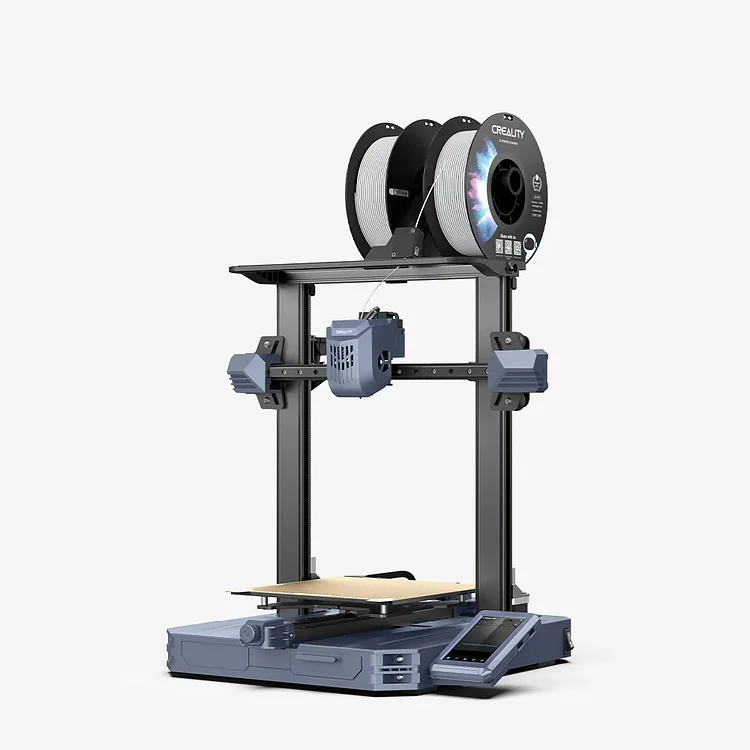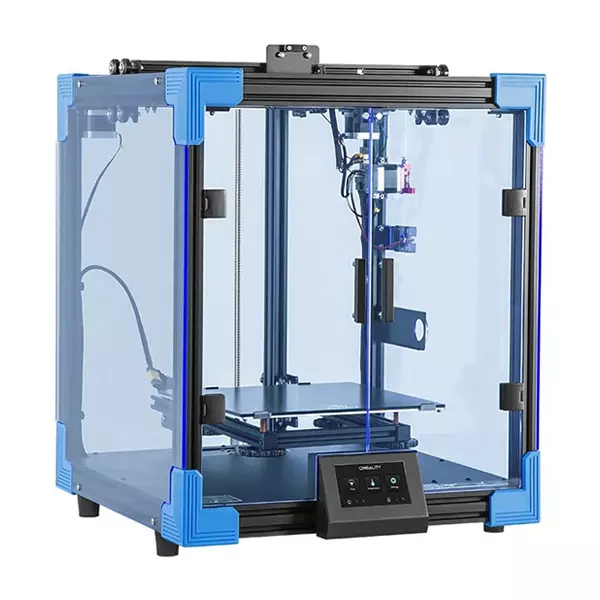Compare CR10 SE vs Ender 6
Comparison between the best 3D printers
Choose the best 3D printer at the best price. The cheapest 3D printers are here.
Buy a 3D printer here with 3D Fila.
 |
 |
|
| Model | CR10 SE |
Ender 6[BUY Ender 6] |
| Printing Material | Filament | Filament |
| Buy Filament for Creality CR10 SE | Buy Filament forCreality 3D Ender 6 | |
| Estimated price | $386,00 | $499,00 |
| Manufacturer | Creality | Creality 3D |
| Release Year | 2023 | 2020 |
| Print Volume [mm] | 220x220x265 | 250x250x400 |
| Printer Size [mm] | 490x470x625 | 495x495x650 |
| Weight [kg] | 6,9 | 22 |
| Power Loss Recovery | NO | YES |
| Enclosed printer | NO | YES |
| Bed Leveling | Manual | |
| Filament End Sensor | NO | YES |
| Bed type | Heated | |
| Power supply system | Direct Drive | Bowden |
| Standard nozzle | 0,4 | 0,4 |
| Maximum Nozzle Temperature [°C] | 300 | 260 |
| Maximum Bed Temperature [°C] | 110 | 100 |
| Maximum printing speed [mm/s] | 600 | 150 |
| Filament holder | YES | YES |
| Camera for supervision | YES | YES |
| Recommended filaments | PLA, PETG, PET, TPU, PA Wood, ABS, ASA, PA, PLA-CF | PLA, TPU, ABS, PETG |
| Recommended slicers | Creality Print, Cura, Simplify3D, PrusaSlicer, Orca Slice | Cura, Simplify, Slic3r |
| Maximum Resolution [mm] | 0,1 | 0,1 |
| Processor | 32 bits | |
| Display | Touchscreen TFT 4,3'' | |
| Power Supply | 24V / 504W | |
| Connectivity | USB, Wifi | SD / USB |
| Operating systems | Windows, Linux, Macbook | Windows, Mac, Linux |
| Date of registration in the system | 2024-07-02 | 2021-04-15 |
| Release date | 2023 | 2020 |
| Extra features | The Creality CR10 SE stands out for its printing speed of up to 600 mm/s, easy and intuitive assembly, direct extruder with double gears, hotend with hardened steel nozzle and ceramic heater, automatic leveling with CR-Touch and pressure sensor, and use of Creality OS firmware based on Klipper, with automatic input shaping calibration. It also includes Wi-Fi connectivity, a filament out-of-stock sensor and a robust structure with linear rails on the X and Y axes. | The Creality Ender 6 stands out in the world of 3D printers with its CoreXY system, offering fast and high-quality prints. With a robust design, it has acrylic panels to protect against air currents, optimizing the printing of materials that require higher temperatures. It features a generic Creality hotend, effective up to ~240°C. Its differentials include 10mm GATES belts, promoting stability at high speeds, and a 360W power supply for reliable performance. The machine also has an intuitive user interface through a 4.3-inch touchscreen. |
| Support for multiple colors and materials (AMS and CFS) | NO | NO |
Notes * |
||
| Cost-benefit | 7 / 10 | 7 / 10 |
| Hardware | 2.1 / 10 | 2.5 / 10 |
| Tela | . | . |
| Print volume | 3 / 10 | 4 / 10 |
| Performance | 5 / 10 | 1 / 10 |
| [BUY Ender 6] |
Conclusion |
| In comparing the Creality CR10 SE and the Creality Ender 6 3D printers, several key factors emerge that highlight their strengths and weaknesses, allowing potential buyers to make an informed decision. The CR10 SE offers a more attractive price point and boasts impressive printing speeds of up to 600 mm/s, making it a great choice for users prioritizing speed and efficiency. Its features, including a manual bed leveling system, direct drive extruder, and an intuitive assembly process, cater well to beginners and those looking for fast turnaround times. The inclusion of features like a touchscreen display and Wi-Fi connectivity further enhances user experience, despite lacking some advanced features like power loss recovery and filament sensors. Conversely, the Ender 6, while more expensive, provides several benefits that may justify the higher cost for certain users. Its larger print volume and enclosed design lend it greater versatility for diverse materials and larger projects, making it suitable for more experienced users or those planning to work with higher-temperature filaments. Additionally, the Ender 6's robustness and reliability—emphasized by its CoreXY system and protective panels—make it a solid option for consistent and high-quality prints. Ultimately, the choice between these two printers hinges on individual needs. For those beginning their 3D printing journey or seeking speed on a budget, the CR10 SE is a compelling option. On the other hand, the Ender 6 appeals to more experienced users who require a higher capacity and advanced features, even at an increased investment. In summary, both printers excel in different areas, offering substantial benefits depending on the user's specific preferences and printing goals. |

